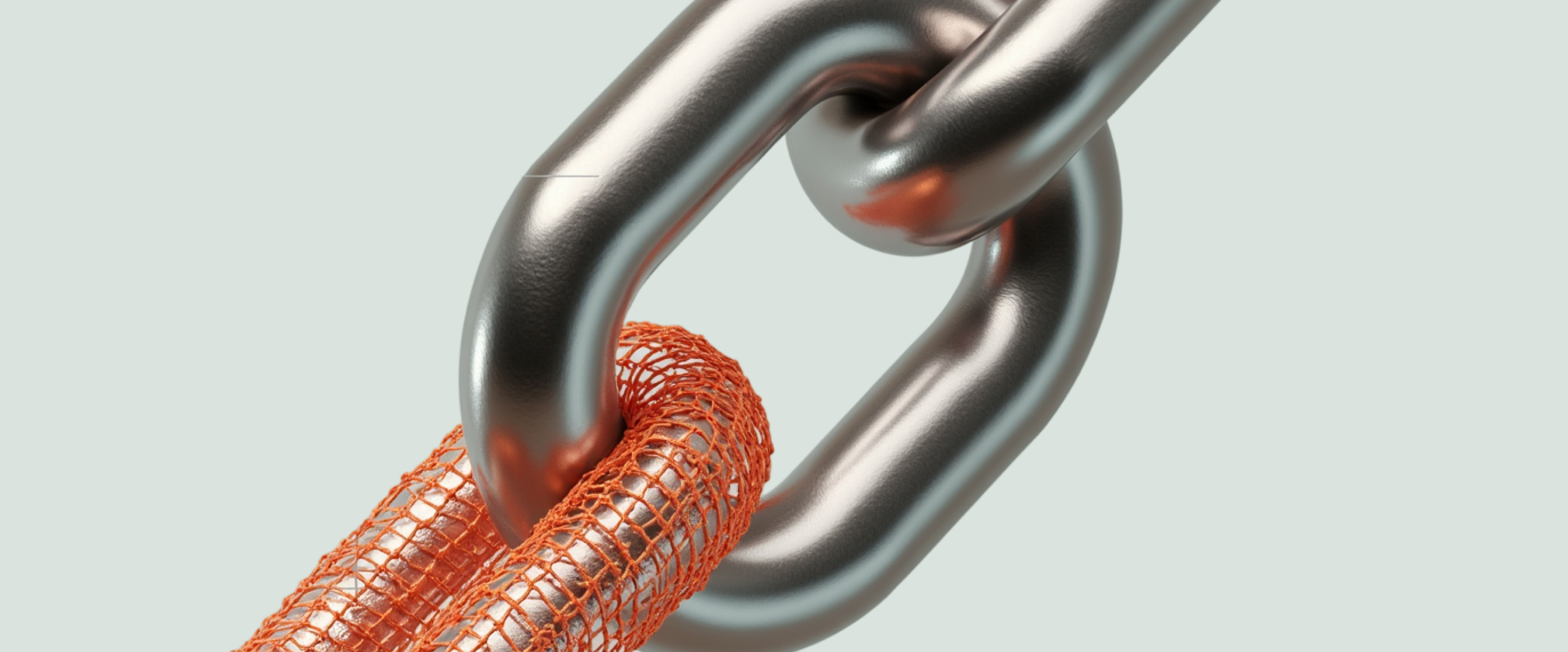











Recognitions
projects
Services

How to Know When Your Website Needs a Redesign



In the digital realm, user experience design holds the key to unlocking website success. Keeping your website up-to-date and relevant is crucial as it serves as a virtual storefront. Get ready to unveil the secret to keep your website captivating.
In today's digital landscape, a website is more than just a collection of webpages; it's a dynamic ecosystem that can significantly impact user satisfaction and business success. The key to unlocking this potential lies in a well-crafted User Experience (UX) design. Beyond aesthetics, a captivating UX design guides users effortlessly, leaving a lasting impression, sparking conversions, and establishing trust in your brand. In this article, we will explore the significance of UX design and the indicators that suggest a website redesign is needed. We will also delve into the essential steps involved in creating a seamless digital experience, along with examples of successful UX website redesigns from renowned brands.
Evaluating User Experience
User experience plays a pivotal role in website development, shaping how users interact with and perceive a website. Focusing on user satisfaction, optimising accessibility, and improving usability are the cornerstones of a successful UX design. To assess the quality of your site's UX design, there are three key questions to answer: Is it driving the desired business results? Is your website attractive and does it provide a smooth user journey that effectively communicates your messages to your target audiences? Is the site performing well from a technical perspective?
A good UX leads to intuitive, efficient, and enjoyable user journeys, positively impacting user engagement, navigation, and conversions. In fact, Forrester Research revealed that a well-designed user interface can increase website conversions by up to 200%. When users have a positive experience on a website, they are more likely to engage with the content, explore different pages, and take desired actions, such as making a purchase or submitting a form.
Conversely, an outdated website reflects poorly on your business and is less appealing to visitors. Surveys have shown that 81% of internet users think less of a business if the website is not updated, and 39% would hesitate to use a product or service if the website is not fresh, user-friendly, and up-to-date.
Moreover, Google's John Mueller suggested that poor design could negatively impact a website's search rankings. With the average website lifespan being 2 years and 7 months, if your website is over 5 years old, it could probably benefit from some level of overhaul to leverage advancements in technology, best practices, and search ranking factors.
There are other indicators that suggest your website needs an upgrade. High bounce rates, low conversions, and a lack of expected traffic, leads, and conversions are clear red flags. Negative user feedback, whether through direct complaints or online reviews, should also be taken into consideration. Approximately 88% of online consumers are less likely to return to a website after a bad user experience, according to Econsultancy's survey.
To effectively evaluate user experience and understand your site's performance, conducting user research and analysing website analytics are crucial steps. User research involves gathering valuable insights about user behaviour, needs, and preferences through various methods such as surveys, interviews, and usability testing. On the other hand, website analytics provide essential data on user behaviour, including metrics like page views, time spent on the site, and conversion rates. By combining user research with website analytics, you can gain a comprehensive understanding of user behaviour and preferences, empowering you to make informed decisions during the website redesign process.
Identifying Design Issues
When evaluating the user experience of a website, it's crucial to identify common UX design problems that can significantly impact user satisfaction and engagement. Let's explore some of the issues that may indicate the need for a redesign.
- Confusing navigation. Users may struggle to find information or get lost within a website's structure, which leads to frustration and a high bounce rate. Clear and intuitive navigation is essential to guide users through the site seamlessly.
- Slow loading times. Users expect fast and responsive websites. If pages take too long to load, users may leave the site, negatively impacting user engagement and even search rankings. According to a report by Google, 53% of mobile users abandon a website if it takes longer than three seconds to load, while a study by Adobe found that 39% of users will stop engaging with a website if the images take too long to load.
- Lack of mobile responsiveness. With nearly half of all website traffic coming from mobile devices, a non-responsive website can lead to a poor user experience, hindering navigation and readability on smaller screens. A responsive design ensures that the website adapts seamlessly to different devices, providing a consistent and enjoyable experience for all users, regardless of screen size.
- Outdated visuals. A modern and visually appealing design not only attracts users but also establishes credibility and trust. An outdated look may give the impression that the business is not up to date or reliable, leading to a negative perception among users.
- Difficulty in making updates. If making even small changes or updates to the site is a cumbersome process, it may be an indication that the website's platform or content management system needs improvement. An efficient and user-friendly backend is essential for maintaining and updating the website effectively.
- Lack of accessibility. Websites should be designed with accessibility in mind, ensuring that all users, including those with disabilities, can access and interact with the content. By prioritising accessibility, you can reach a wider audience and demonstrate your commitment to inclusivity.
To address these issues, businesses should consider a website redesign that focuses on improving user experience that leaves a positive and lasting impression on visitors.
The Website Redesign Process
Planning and executing a website redesign require careful consideration and a clear understanding of your goals and objectives. Setting clear, quantifiable goals that align with your business objectives is essential for laying a strong foundation for the redesign process. After analysing your data analytics and identifying areas for improvement, establish objectives, budgeting factors, and timelines to guide the entire redesign process effectively. Make sure to set realistic quantitative metrics for improvement and consider how the redesign will impact your brand's identity and value proposition. By allocating a sensible budget and timeframe for the project and keeping a clear vision of your objectives, you'll sustain motivation and keep your team focused and committed throughout the redesign journey.
During the redesign phase, create a site map and user workflows. Proceed with wireframing and prototyping, iterating until you find the best solution that caters to both your business and users. The iterative design process is not a straight line from point A to point B; it's more like a winding road where you might need to turn back, take a detour, or find a new path based on user feedback and testing results. This approach allows for continuous improvement and a user-centric approach to ensure an effective redesign.
Keep in mind that a website serves as a window into your company, making the design and aesthetics crucial in creating a lasting impression. Consider updating your logo, photography, and graphics to reflect a modern and visually appealing design that establishes credibility and trust in your brand. Utilise valuable infographics strategically to raise your web page authority score, and consider incorporating videos, if suitable, to facilitate link building. Effective use of white space and defining the personality and tone of your website will enhance the overall user experience. Choose a colour scheme that represents your brand effectively. Ensure consistency throughout your site and assess if the layout facilitates easy navigation. Don't overlook technical aspects for example minimise redirects, optimising meta descriptions and ALT text, and assessing your site's platform for a smooth user experience.
Testing plays a vital role when the prototype is in the hands of users, allowing the gathering of valuable feedback to identify elements that users appreciate and areas that may cause frustration. User testing and feedback are crucial during the redesign phase, especially when involving users familiar with the previous product. While redesigns can be met with resistance, user testing helps uncover genuine usability issues. Continuously iterating based on user feedback ensures the user experience aligns with their expectations and delivers a product that meets their needs effectively.
According to a survey by HubSpot, 75% of users admit to making judgments about a company's credibility based on its website design.
Creating a captivating and modern site can be challenging, though, so you might need a helping hand here from a UX/UI designer or agency. When selecting an agency for the redesign, look for those with a solid grasp of UX principles, keeping up with the latest trends, and experience in handling diverse UX challenges. Ensure they place the user at the forefront of their design decisions and emphasise effective communication. Select an agency with a clear and well-defined design process that aligns with industry standards. Look for adaptability in their approach to suit the unique needs of each project. Review the agency's portfolio to understand their capabilities and how they tackle various design challenges. Examine case studies to gain insights into their design process, problem-solving abilities, and real-world impact. Together, these components form a comprehensive picture of what the agency can deliver.
Successful UX Website Redesign Examples
Real-life examples of websites that excel in functionality, aesthetics, and user experience can serve as a source of inspiration for your redesign efforts. Here are some noteworthy cases.
Airbnb
Its new UX design caters to the needs of both hosts and guests, creating a personalised experience for each user group. The user-friendly booking process streamlines information, providing helpful previews and ensuring users feel at ease throughout the process, resulting in increased user engagement and conversions. The UX design prioritises convenience, simplicity, and clear indications, reducing friction and making it easy for users to navigate and find relevant properties.
The redesign focuses on easy navigation and customisation options, allowing users to explore the site at their own pace and improving the onboarding process and user satisfaction.
Dropbox
Addressing content-heavy issues and improving information display with added features like thumbnail views leads to better usability and increased user satisfaction.
Slack
The redesign focuses on simplifying navigation, enhancing team collaboration features, and improving usability, leading to increased user engagement and satisfaction. The accessible menu, direct communication with customers, and other improvements have led to a 32% increase in user engagement and a 25% increase in user satisfaction.
These examples highlight the importance of prioritising user needs and preferences in successful UX website redesigns. The brands mentioned achieved user-friendly platforms by emphasising convenience, simplicity, ease of use, customisation, and clear communication. Continuous testing and refinement of the user experience allowed these companies to optimise their products, meet user expectations, and achieve positive outcomes. Businesses can find valuable inspiration for their own website redesign by studying and learning from these examples, aiming to create an equally outstanding user experience.
Conclusion
The importance of UX design cannot be overstated. A well-crafted UX is pivotal in shaping user satisfaction and business success. Investing in UX design and keeping your website up-to-date can yield tremendous benefits and help stay relevant in the competitive market.
As you read this, take a moment to assess your own website. Is it delivering the desired business results? Is it meeting the needs of your target audience? Does it provide a seamless user experience that fosters trust in your brand? If you notice any signs of outdated design or poor user experience, it might be time for a website redesign.
If you feel overwhelmed by the prospect of a website redesign or lack the expertise to do it yourself, seek professional help. Partner with a UX/UI designer or agency that understands your business goals, stays abreast of the latest trends, and emphasises effective communication. They can guide you through the redesign process, ensuring your website aligns with industry standards and delivers an outstanding user experience. The topic How to Choose Right UX Agency has already been covered in our blog.
Remember, your website is the window to your company in the digital world. A compelling UX design will leave a lasting impression, engage your audience, and ultimately drive business success. Your users will thank you, and your brand will thrive. So, what are you waiting for? Contact Fourmeta today, and let your business thrive!




.avif)






















.avif)



